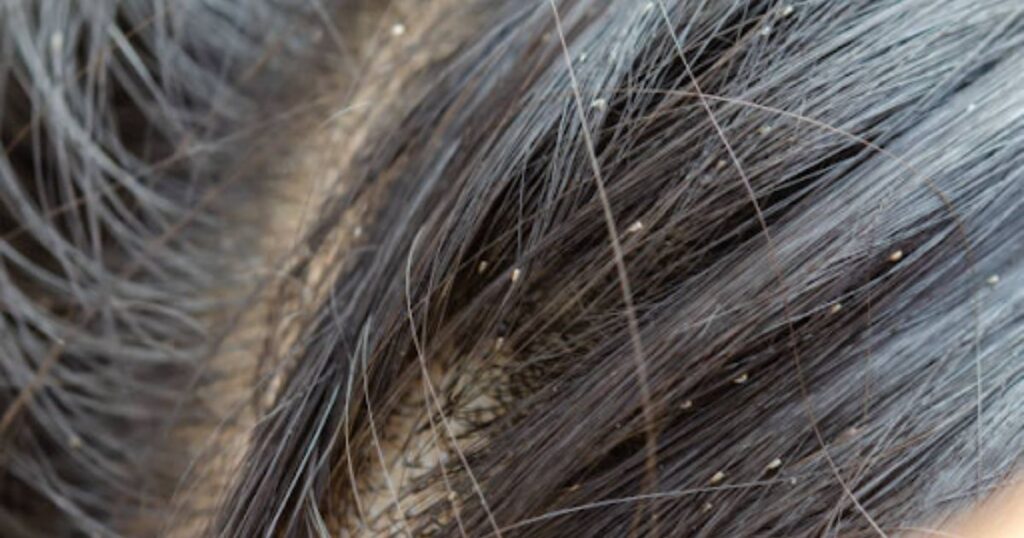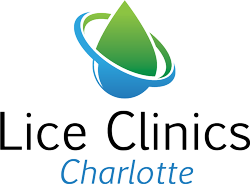Do Lice Have Wings? What to Know About Lice Biology

As some of the leading local lice removal experts, we get a lot of questions about lice. One of the most common questions we get is “Do Lice have wings?” Many individuals are under the impression that these creatures have wings and that is how they jump from person to person spreading so quickly. And that comes as no surprise, lice are a common issue in the US.
Lice are tiny insects that infest human scalps and are a persistent problem for millions of Americans each year. An estimated 6 to 12 million people in America are infected each year. This can lead many people to ask questions about lice, such as how to prevent them, determine if you have them, and ultimately treat the infestation.
However, some people may be interested in the biology of lice, namely whether or not they can fly. If so, this is the blog for you! Our Carolina lice removal experts explain everything you’ve ever wanted to know about lice biology.
What Are the Different Types of Lice?
Before diving into the biology of lice, it is important to have a high-level understanding of what they are and the different types of lice.
Lice are ectoparasites, meaning they live on the outside of their host’s body. There are three main types of lice that infest humans: head lice, body lice, and pubic lice. For the purpose of this discussion, we will focus primarily on head lice since this is the most common type and the type of lice we treat at our Carlonia lice clinics.
Do Lice Have Wings?
Contrary to popular belief, head lice do not have wings. Head lice are small, wingless insects with six legs adapted for gripping onto hair shafts. The absence of lice wings is a key characteristic that distinguishes head lice from other insects.
While this may come as a relief to those grappling with lice infestations, the reality is that these tiny creatures have developed other remarkable adaptations that make them highly adept at survival and reproduction. Even though lice do not have wings, they can still spread very easily and are not to be taken lightly.
The Life Cycle of Head Lice
To understand the dynamics of head lice infestations, it is crucial to grasp the lice life cycle. Most lice do not live more than 30 days on a host, but during that time they go through rapid changes. Head lice undergo three main developmental stages during their short lives.
The Beginning Stage of the Lice Life Cycle: Nits
The first stage of the lice life cycle is when lice are nits or eggs. Nits are tiny, oval-shaped eggs attached to hair shafts near the scalp. The lice egg, or nit, is laid by the female near the base of the hair shaft. Usually, lice eggs take about 8-9 days to hatch and begin the next cycle of their life. Since lice eggs need to be kept at a temperature near the human scalp, they will not survive long if separated from a host. Generally they will become non-viable after a week.
How Long Are Lice Nymphs or Baby Lice?
Once the eggs hatch, nymphs emerge and begin their lives. These ‘baby’ lice look just like their adult counterparts and feed on the blood of their host daily. During this stage lice nymphs undergo three molting stages before reaching adulthood. This growth stage lasts about 1 third of their lives or ten days.
How Big Are Head Lice During the Adult Stage?
The final stage is when lice become adults. Adult lice are about the size of a sesame seed, making them visible to the naked eye. Adult head lice feed on human blood by piercing the scalp with their specialized mouthparts.
Are There Differences Between Female and Male Lice?
The females, which are typically larger than males, can lay up to six eggs per day and can begin laying eggs 2 days after the first time they mate. Females will continue to lay eggs for the next 10-16 days before they reach the end of their lives. This rapid reproduction cycle contributes to the persistence of head lice infestations and highlights the importance of timely and effective lice treatment.
How Do I Know If I Have Head Lice?
As you read through this blog, you may walk away frightened that you or someone you know may have head lice. With that in mind, here are popular symptoms to keep in mind that can suggest a lice infestation: persistent itching of the scalp, red bumps or sores on the scalp and neck, and a feeling of something moving in the hair. These are, clearly, non-specific symptoms but if you have 1 or many of these, it certainly warrants a visit from a professional!
I Think I Have Lice! What Do I Do?
While it is intriguing to discuss the life cycle of lice, how to know if you have them, and if they have wings, it is clearly the most important to know what to do about them. Listed below are multiple treatment options for you to consider.
Over-the-Counter (OTC) lice Treatments
There are many different types of over-the-counter lice treatments. Many OTC lice treatments contain pediculicides, which are chemicals designed to kill lice. Common active ingredients include permethrin and pyrethrin. It is essential to carefully follow the instructions on these products and, in some cases, use a fine-toothed comb to remove dead lice and nits.
Lice Prescriptions or Medications:
In cases where OTC treatments prove ineffective, healthcare providers may prescribe stronger medications, such as malathion or ivermectin. Prescription treatments are typically reserved for severe infestations and should only be used under professional guidance.
Do Natural Lice Remedies Work?
Some individuals prefer natural remedies for lice treatment, however, the effectiveness of these home lice treatments is unproven and far less effective than a professional treatment.
Tea tree oil, neem oil, and coconut oil are among the natural options believed to have anti-lice properties. While these remedies may offer some relief, scientific evidence supporting their effectiveness is limited, and caution should be exercised. If you or a loved one has a lice infestation you should contact a local lice removal clinic near you.
Professional Lice Removal
Manual lice removal and nit removal using a fine-toothed comb is an essential component of any lice treatment plan. This method helps eliminate both live lice and unhatched eggs, reducing the risk of re-infestation. Along with lice comb-out removal methods, professional lice removal specialists have other tools and treatments that are far more effective against lice. These treatments are not painful and in most cases, the individual can return to work or school after treatment.
How Can I Prevent Head Lice?
Treating head lice is not just about addressing the lice on the scalp; it also involves taking measures to eliminate lice from the environment. Lice can survive off the human scalp for a limited time, so thorough cleaning of personal items and spaces where infected individuals spend time is crucial.
Washing and Vacuuming to Remove Lice
Washing bed linens, clothing, and personal items in hot water can help eradicate lice and nits. Vacuuming furniture, carpets, and car seats also aids in removing any stray lice.
Isolation of Personal Items:
Infested individuals should avoid sharing personal items such as combs, brushes, hats, and headphones to prevent the spread of lice.
Educational Initiatives:
Schools and communities should implement educational programs to raise awareness about lice prevention and the importance of early detection and treatment. This can help reduce the stigma associated with lice and promote a more proactive approach to addressing infestations.
Hopefully, this lice bloody article gives you a high-level overview of lice and now you know the answer to “Do Lice have wings?” Now you should understand head lice biology, life-cycle, symptoms, treatment, and prevention.
While head lice do not have wings, their ability to reproduce rapidly and cling to human hair makes them a persistent and bothersome issue. It is imperative to stay vigilant and regularly check for signs of head lice, as catching these creatures early can be the key to successful treatment.
Where Can I Get Lice Removal Near Me?
At Lice Clinics of Charlotte, we understand the distress and discomfort that come with a lice infestation, and we are dedicated to providing effective and compassionate solutions for our clients. We pride ourselves on being a trusted resource in the community for lice treatment, offering cutting-edge technology and proven methodologies to ensure a swift and thorough resolution to the problem. Our experienced and certified professionals are here to guide you through the entire process, from accurate lice detection to personalized treatment plans tailored to your unique situation.
With our commitment to utilizing the latest advancements in lice treatment, such as our signature AirAllé device, we can guarantee a non-toxic and pesticide-free approach that is not only highly effective but also safe for all ages. At Lice Clinics of Charlotte, we are not just a service provider; we are your partners in overcoming the challenge of lice, providing support, expertise, and a welcoming environment throughout the entire treatment journey.
Contact one of our lice treatment specialists today to learn more about the most effective lice treatment options.
